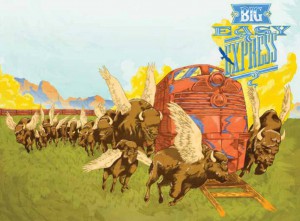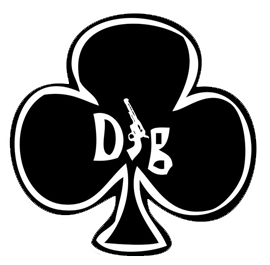Scenes & Songs is a feature focused on the intersection of music and film, or in this case, TV. Each installment intends to examine movies and shows that involve significant musical subject content, distinct soundtracks, or maybe even just an excellent song used for a specific scene. View all
 One of my favorite features on this blog has always been Scenes And Songs. I am happy to finally be able to contribute something to back to it. The 2012 documentary film Big Easy Express chronicles three of the most popular indie / folk / bluegrass bands of the moment: Old Crow Medicine Show, Mumford and Sons, and Edward Sharpe and the Magnetic Zeros. The scene I have chosen is the opening sequence.
One of my favorite features on this blog has always been Scenes And Songs. I am happy to finally be able to contribute something to back to it. The 2012 documentary film Big Easy Express chronicles three of the most popular indie / folk / bluegrass bands of the moment: Old Crow Medicine Show, Mumford and Sons, and Edward Sharpe and the Magnetic Zeros. The scene I have chosen is the opening sequence.
The film begins with three consecutive establishing shots. You see the roof of the train, with desert and mountains in the distance. You hear train noises, and a notable lack of music. By the 30 second mark the film cuts to an interior shot of the train. This shot will run, uncut, for the next four minutes and eight seconds. Let me say that again, 4m and 18s. That is slightly longer than the length of a modern radio song. In today’s modern editing style this is an eternity.
The shot follows Jade Castrinos, known mostly as the female vocal half of Edward Sharpe and the Magnetic Zeros, walking the length of the train. On her journey she encounters folk royalty.
First up: Mumford and Sons playing their original tune Banjolin Song. They are seated in their train compartment, adorned with lamps and booth seating, like a classy diner. Jade sits down to the left of Marcus Mumford and listens for about 30 seconds before continuing her journey.
After letting up the shades to get some extra natural light onto the train she walks past what I can only assume is Old Crow Medicine Show’s private bar, and pulls into Old Crow Station right around the two minute mark. There is no sitting in this car though. She gets right to dancing to the lively rendition of the traditional tune John Henry. By the time the chorus hits all six Crows are belting it out. Jade shares a quick dance with frontman Ketch Secor and heads on.
As she travels, opening and closing train car doors, you really get a feel for the train. She passes people hanging out. You get a quick look at a train staff member preparing food. Again the music has faded to train rhythms. For this moment you are another passenger on the train, following Jade toward the music of Edward Sharpe and the Magnetic Zeros.
The Zeros are circled up (and there are a lot of them so it is a big circle) singing their song If You Wanna. You can tell Jade is home. She sits, smiles, and starts to sing. This is the only band of the three that I have had the pleasure of seeing in person, and this intimate jam session sums up their carefree stage presence perfectly.
The film ends with Alexander walking up to a very cool observation deck and deliver a thoughtful monologue about how they are not playing music for the country, but rather with the country. As he speaks you watch the vast desert of the Southwestern United States whip by. It is sunny. It is perfect.
Now, is the shot length a coincidence? I’d say no. I believe that this shot was meant to exist on its own. A folk mashup capped off with a nice monologue from Alexander Ebert that would serve as a perfect long format trailer for the film. I think the long shot beautifully symbolizes the journey these people are taking, a departure from the jump cutting that we have become accustomed to in modern filmmaking. They are rambling across the country the same way people would have when this style of music was in its heyday.
The world has since changed. People jump in their cars, often alone, and zip over interstates. Listening to recorded music, stopping at the same chain gas stations and restaurants that litter every off-ramp in our great country. In the modern world, travel / music have become increasingly convenient. While this isn’t inherently a bad thing, we should at least acknowledge that it is different, and will effect the way we engage with our country / music. It’s beautiful to see these people make a choice to travel slow, and make their own music.
If you are interested in long shots in filmmaking you should check out the wiki page for the Hitchcock film Rope, one of the most famous long shot films from the master of suspense himself.

